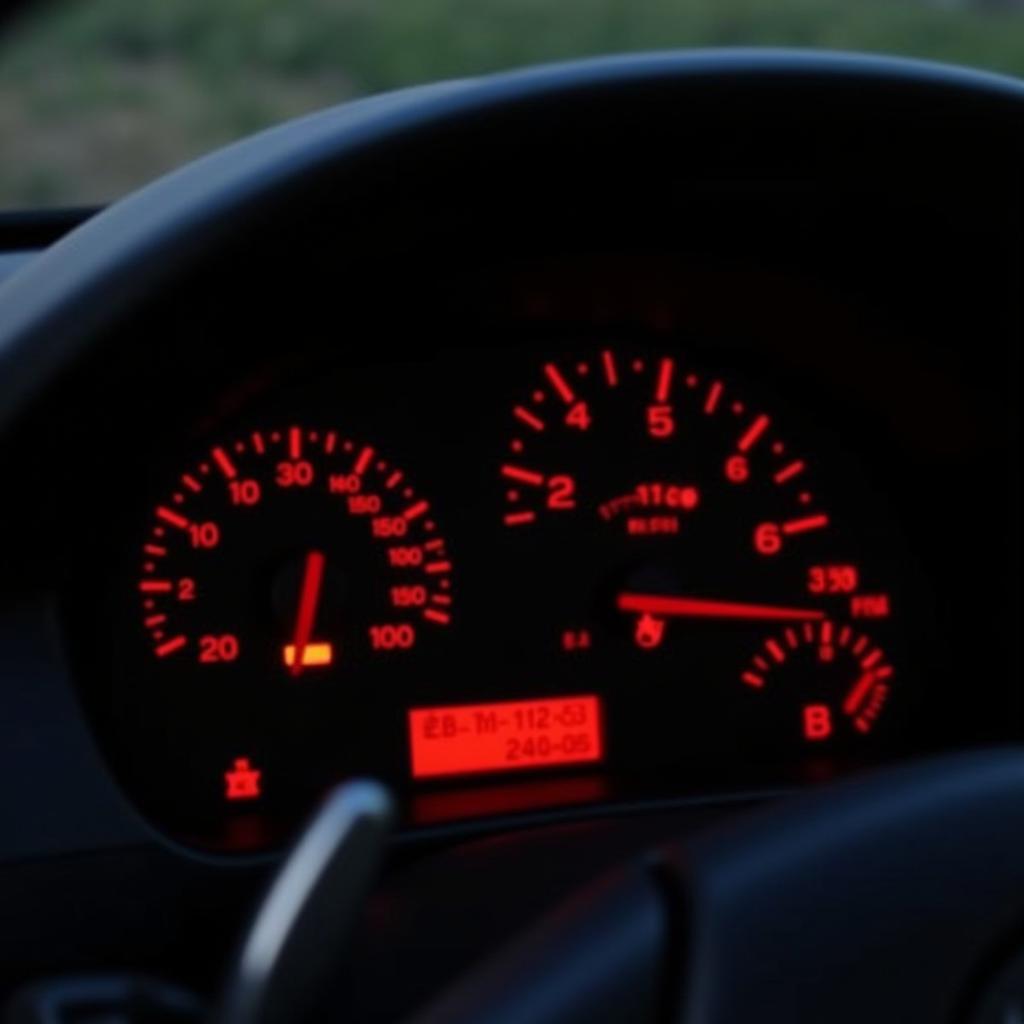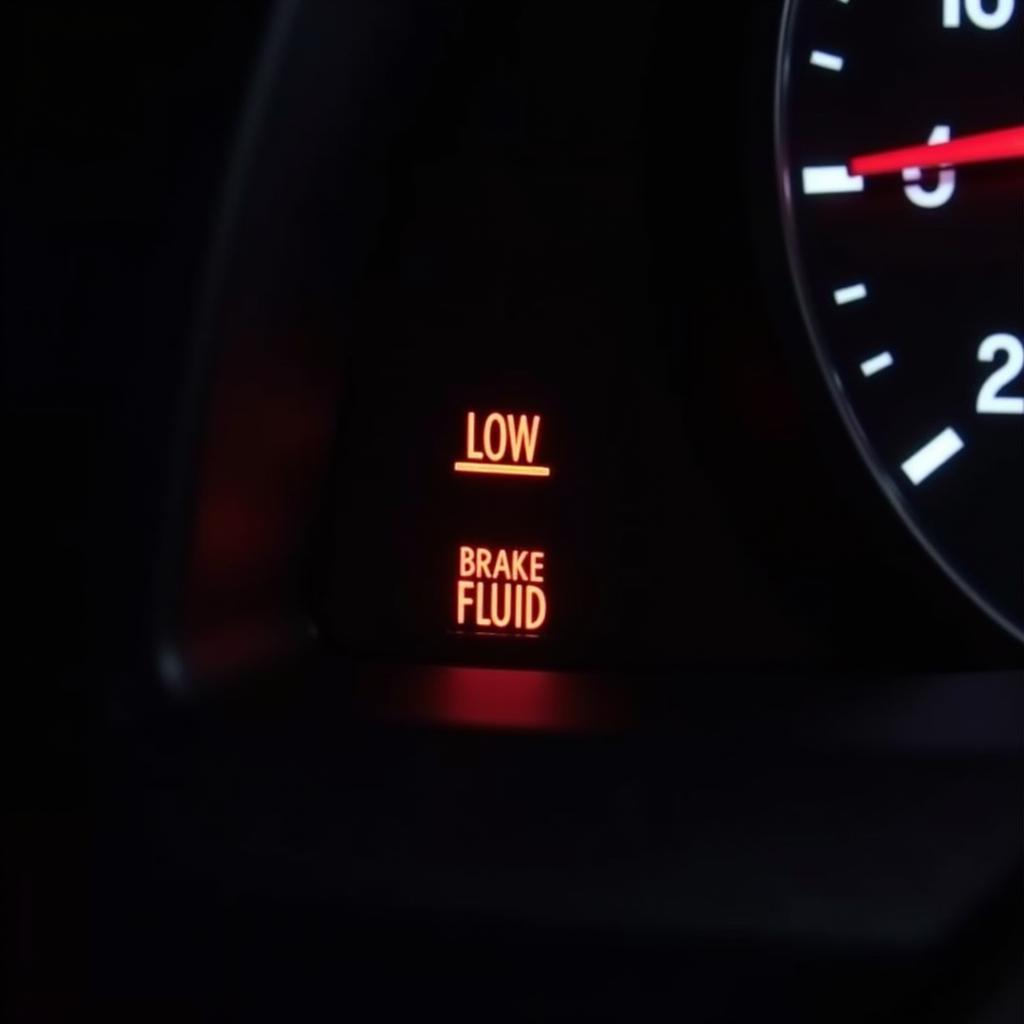A glowing brake fluid warning light on your dashboard is never a welcome sight. It often signifies a potential issue with your vehicle’s braking system, requiring immediate attention. Ignoring this warning can have serious consequences, compromising your safety and that of others on the road. This comprehensive guide delves into the intricacies of brake fluid warnings, empowering you to understand their implications and take appropriate action.
What Does the Brake Fluid Warning Light Mean?
The brake fluid warning light, typically depicted as a circle with parentheses and exclamation mark or the letters “BRAKE,” illuminates for two primary reasons:
- Low Brake Fluid Level: This is the most common culprit. Brake fluid levels can drop due to leaks in the braking system, worn-out brake pads, or even normal wear and tear over time.
- Brake System Malfunction: In some cases, the warning light may signal a problem within the brake system itself, such as a faulty brake line, master cylinder, or ABS module.
The Importance of Brake Fluid
Brake fluid is the lifeblood of your car’s braking system. This hydraulic fluid transmits the force applied to the brake pedal to the wheels, effectively slowing down or stopping your vehicle. When the brake fluid level is low, the pressure within the system drops, diminishing braking power and potentially leading to brake failure.
Common Causes of Brake Fluid Warnings
- Brake Fluid Leaks: Leaks can occur in various components of the braking system, including brake lines, hoses, calipers, and the master cylinder.
- Worn Brake Pads: As brake pads wear down, the caliper pistons extend further to compensate. This extension requires more brake fluid, leading to a drop in the fluid level.
- Faulty Master Cylinder: The master cylinder is responsible for pressurizing the brake fluid. If it malfunctions, it can lead to fluid loss and trigger the warning light.
- Issues with the ABS System: A problem within the Anti-lock Braking System (ABS), such as a malfunctioning sensor or pump, can also trigger the brake fluid warning light.
What to Do When Your Brake Fluid Warning Light Comes On
- Stop Driving Immediately: Pulling over as soon as it’s safe ensures your safety and prevents further damage to the braking system.
- Check the Brake Fluid Level: With the engine off, locate the brake fluid reservoir under the hood. It’s typically a translucent container with “DOT 3” or “DOT 4” printed on the cap. Carefully remove the cap and check the fluid level.
- Add Brake Fluid (If Necessary): If the fluid level is low, carefully top it off with the correct type of brake fluid specified in your owner’s manual. However, if you need to add fluid frequently, it’s crucial to have the system inspected for leaks.
- Seek Professional Help: In most cases, it’s best to have your vehicle towed to a reputable mechanic or dealership for a thorough inspection.
Remote Diagnostics and Software Solutions
In today’s technologically advanced world, remote diagnostics and software solutions play an increasingly important role in automotive repair. For certain brake-related issues, remote technicians can access your vehicle’s computer system to:
- Diagnose Problems: They can read diagnostic trouble codes (DTCs) stored in your car’s computer, which can pinpoint the root cause of the brake fluid warning.
- Perform Software Updates: In some cases, brake system issues may be resolved by updating the vehicle’s software remotely.
w163 false brake pad warning rainy day is an example of how remote diagnostics can be used to identify and address false brake warnings.
Preventing Brake Fluid Warnings
- Regular Brake Fluid Flushes: Brake fluid is hygroscopic, meaning it absorbs moisture over time. This moisture contamination can reduce braking efficiency and damage brake components.
- Timely Brake Pad Replacements: Replacing worn-out brake pads prevents excessive piston extension and maintains the proper brake fluid level.
- Routine Brake Inspections: Regular brake inspections by a qualified mechanic can detect potential issues early on, preventing costly repairs and ensuring optimal braking performance.
FAQs about Brake Fluid Warnings
1. Can I drive with the brake fluid warning light on?
No, it’s extremely dangerous to drive with the brake fluid warning light illuminated. Doing so significantly increases the risk of brake failure.
2. How often should I check my brake fluid level?
It’s a good practice to check your brake fluid level at least once a month and before any long road trips.
3. What type of brake fluid does my car use?
The correct type of brake fluid (DOT 3, DOT 4, etc.) is specified in your vehicle’s owner’s manual.
4. Can I add brake fluid myself?
Yes, you can carefully top off the brake fluid if the level is low. However, if you need to add fluid frequently, seek professional assistance.
5. How much does it cost to fix a brake fluid leak?
The cost of repair varies depending on the location and severity of the leak.
Conclusion
Brake fluid warnings should never be ignored. Understanding their significance and taking prompt action can prevent accidents and ensure your safety on the road. Regular maintenance, timely repairs, and professional assistance when needed are crucial for maintaining a reliable and efficient braking system.
lexus brake warning provides additional insights into brake warning lights for Lexus vehicles.


